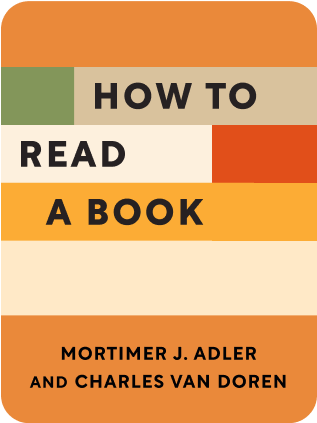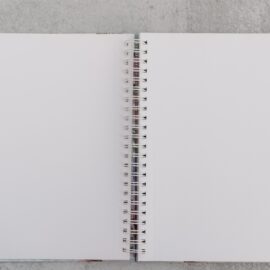

This article is an excerpt from the Shortform book guide to "How to Read a Book" by Mortimer J. Adler and Charles van Doren. Shortform has the world's best summaries and analyses of books you should be reading.
Like this article? Sign up for a free trial here .
Are you thinking of reading How to Read a Book but want to know more about it first? In what context was it written and how was it received?
How to Read a Book was written by Mortimer Adler and Charles Van Doren in 1940. It was one of the first books to teach the art of reading for comprehension rather than speed, and so it became an immediate bestseller. However, it may not still live up to its name in the modern day.
Continue reading for our How to Read a Book review.
How to Read a Book: Book Review
How to Read a Book is the classic guide to reading effectively. It teaches how to understand the crux of a book within 15 minutes, how to analyze a book intelligently, and how to synthesize ideas from multiple books. Reading is an active activity, not a passive one—so if you read a lot of books, it makes sense to learn how to read better and increase the value of your reading.
Here is our How to Read a Book review.
About the Authors
Mortimer J. Adler was a philosopher, Columbia professor, Chairman of the Encyclopedia Britannica, and prolific author of more than 50 books (imagine how many he must have read!). Adler wrote on a range of subjects including Aristotelian philosophy, liberal arts education, capitalism, religion, and morality. As Chairman, he oversaw the publishing of Encyclopedia Britannica’s Great Books of the Western World series and went on to found the Great Books Foundation, a nonprofit organization dedicated to promoting literacy and critical thinking.
Charles Van Doren was a writer, editor, educator, and eventual vice president of Encyclopedia Britannica, Inc. He is the author of six books and the editor of five (many of which were co-edited by Adler). Van Doren came from a literary family—his mother was a novelist and both his father and uncle were Pulitzer Prize-winning authors—and was a polymath, holding advanced degrees in both astrophysics and English.
In the late 1950s, Van Doren was a contestant on “Twenty-One,” a popular quiz show. He ultimately won over $129,000 (which equates to over a million dollars today). However, rumors of fraud prompted a Congressional investigation, and Van Doren ultimately admitted that the network gave him the questions and answers in advance. The 1994 movie “Quiz Show” is based on his involvement in the scandal.
The Book’s Publication
Publisher: Simon & Schuster
How to Read a Book was originally published in 1940 with the subtitle, “The Art of Getting a Liberal Education.” Mortimer J. Adler was the sole author of the first edition. This guide, however, covers the revised 1972 edition, which features a significant content expansion (the book is divided into four parts, only one of which was present in the first edition) and a new subtitle: “The Classic Guide to Intelligent Reading.” The first edition of How to Read a Book was Adler’s ninth book; the 1972 edition was Van Doren’s second book. Both authors wrote extensively on the importance of books and reading (including Van Doren’s The Joy of Reading); however, How to Read a Book remains the most popular book in both authors’ bibliographies.
The Book’s Context
In the preface to this edition of How to Read a Book, Adler described the changes he observed in American society that prompted him to revisit the book 32 years after its original publication. First, the percentage of young people earning college degrees rose significantly during that time period (in part due to the passage of the GI Bill, which financed college education for veterans returning from World War II). Additionally, in 1970, the federal government reiterated the importance of reading when the Secretary of Health, Education, and Welfare announced a national “Right to Read” effort designed to improve reading education for children under age 10. Adler took this educational boom as a sign that reading well was more important than ever and decided to revamp his 1940 classic.
Intellectual Context
How to Read a Book was one of the first books to explicitly teach the art of reading for comprehension rather than speed. Its modern successors include Thomas C. Foster’s How to Read Literature Like a Professor, Steve Leveen’s The Little Guide to Your Well-Read Life, and Harold Bloom’s How to Read and Why, all of which focus primarily on works of fiction (unlike How to Read a Book, which focuses on techniques for reading nonfiction books).
The Book’s Impact
How to Read a Book became an immediate bestseller when it was first published in 1940. The 1972 revised edition has been consistently successful and was most recently republished in 2014.
In 1997, Adler wrote a companion volume to How to Read a Book entitled How to Speak How to Listen, in which he adapts his methodology for close reading to the art of spoken conversation.
The Book’s Strengths and Weaknesses
The 1940 edition of How to Read a Book was critically well-received; upon the book’s release, one reviewer called it, “a serious and valuable invitation to an enrichment of personal life.”
Reviews of the 1972 revised and updated edition, on the other hand, are much more mixed. A 1972 New York Times review particularly exemplifies this tension—the reviewer said he couldn’t decide “whether to praise it or damn it.” He concedes that How to Read a Book fills an important gap in popular education (by teaching the reader how to get the most from a book) but also argues that the book is overly highbrow and ignores the quality of modern fiction. In the end, the reviewer recommends the book to those who are just beginning to read critically; however, he advises those who are already well-versed in the art of reading to “drop this book down the incinerator, throw it on the compost heap, get rid of it; then fumigate the premises and start reading as you please.”
Modern reviews of the 1972 edition are equally mixed—many praise the book for its unique approach to analytical reading but argue that it’s now thoroughly out of date and “boring.”
Commentary on the Book’s Approach
Nearly every idea in How to Read a Book is thoroughly fleshed out. Adler and Van Doren explain what their techniques are, why they’re important, and how to use them. Thus, the authors meet their goal of helping the reader wring more understanding out of the books they read.
To a modern reader, it may seem as though the authors give undue attention to some points that aren’t critical to the main argument; this is likely because society has changed significantly in the decades since the book was published. For example, the authors analyze the strengths and weaknesses of speed-reading in depth because speed-reading was part of the intellectual zeitgeist of the late 1960s and early 1970s. However, speed-reading has fallen in popularity, so the argument has lost some cultural relevance.
Commentary on the Book’s Organization
How to Read a Book is organized into four parts. Part One covers the mechanics of “elementary reading” and tips for “inspectional reading” (which is a form of in-depth skimming). Part Two covers “analytical reading,” which is the authors’ method of wringing as much understanding as possible out of a single book. Part Three offers specific advice for reading books of different genres (like philosophy, poetry, and science). Finally, Part Four covers “comparative reading,” which is the art of reading a wide variety of books on a single subject in order to fully understand that subject. The book ends with a recommended reading list.
This four-part structure is somewhat confusing because the four parts don’t directly map onto the four “levels of reading” that the authors reference throughout the book (with elementary reading and inspectional reading being compressed into one part), nor do they map onto the “four basic questions” that the authors claim a reader should ask about every book.

———End of Preview———
Like what you just read? Read the rest of the world's best book summary and analysis of Mortimer J. Adler and Charles van Doren's "How to Read a Book" at Shortform .
Here's what you'll find in our full How to Read a Book summary :
- How to be a better critic of what you read
- Why you should read a novel differently from a nonfiction book
- How to understand the crux of a book in just 15 minutes






